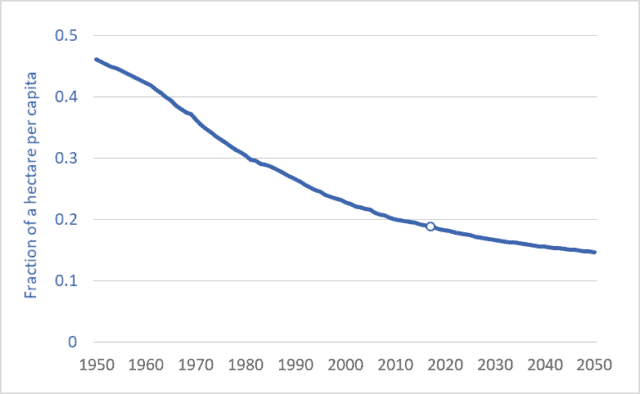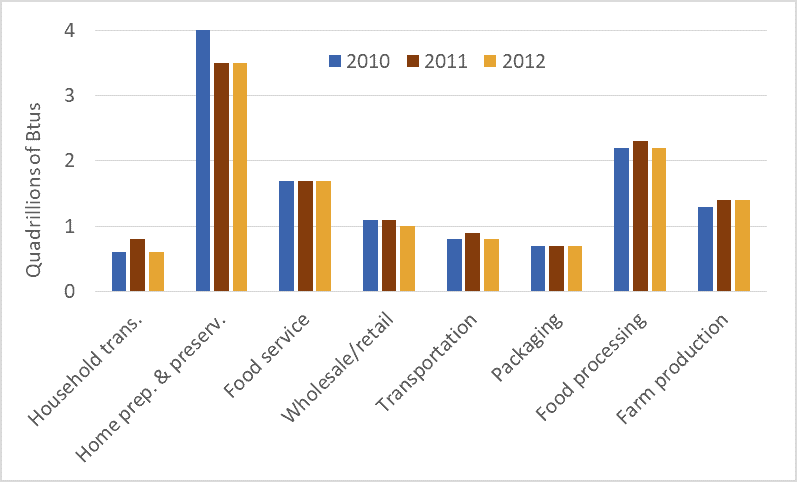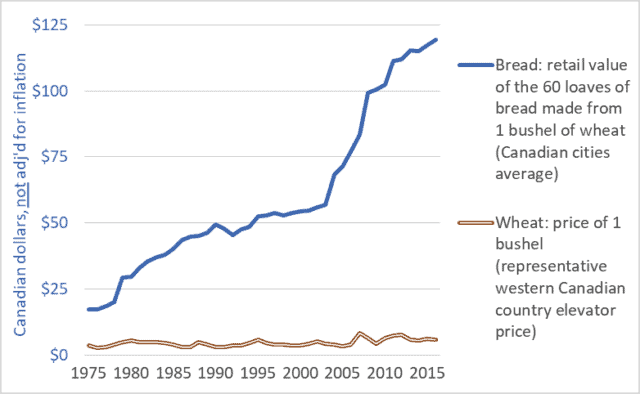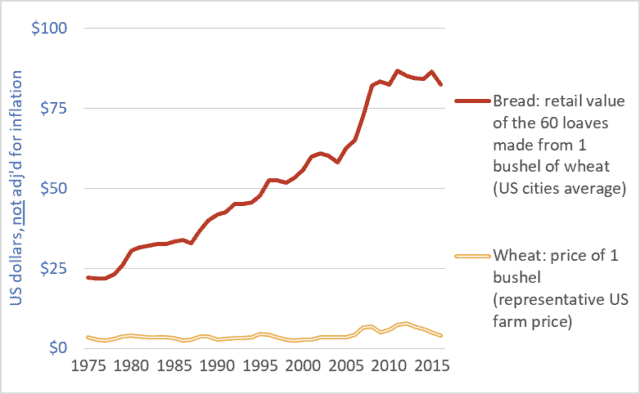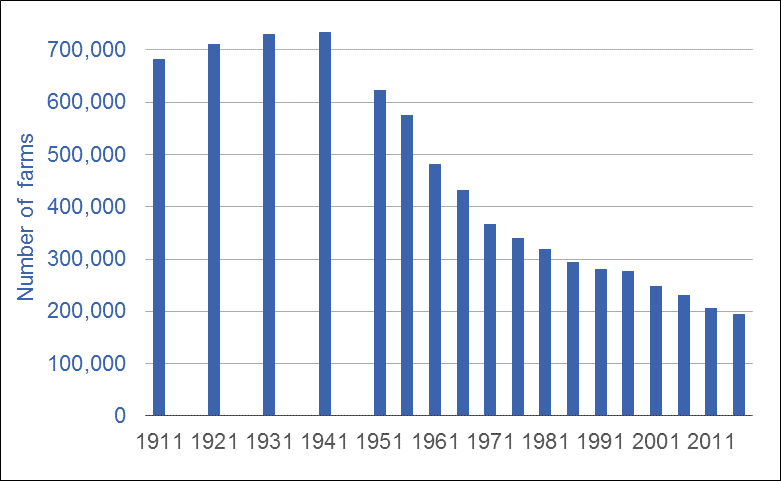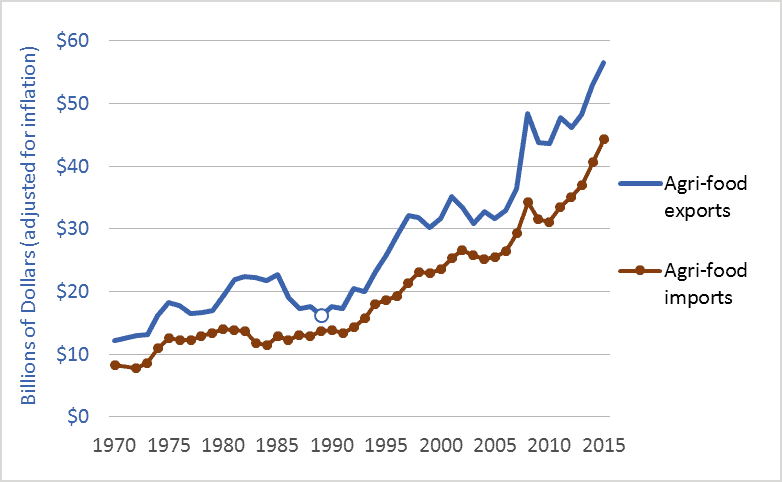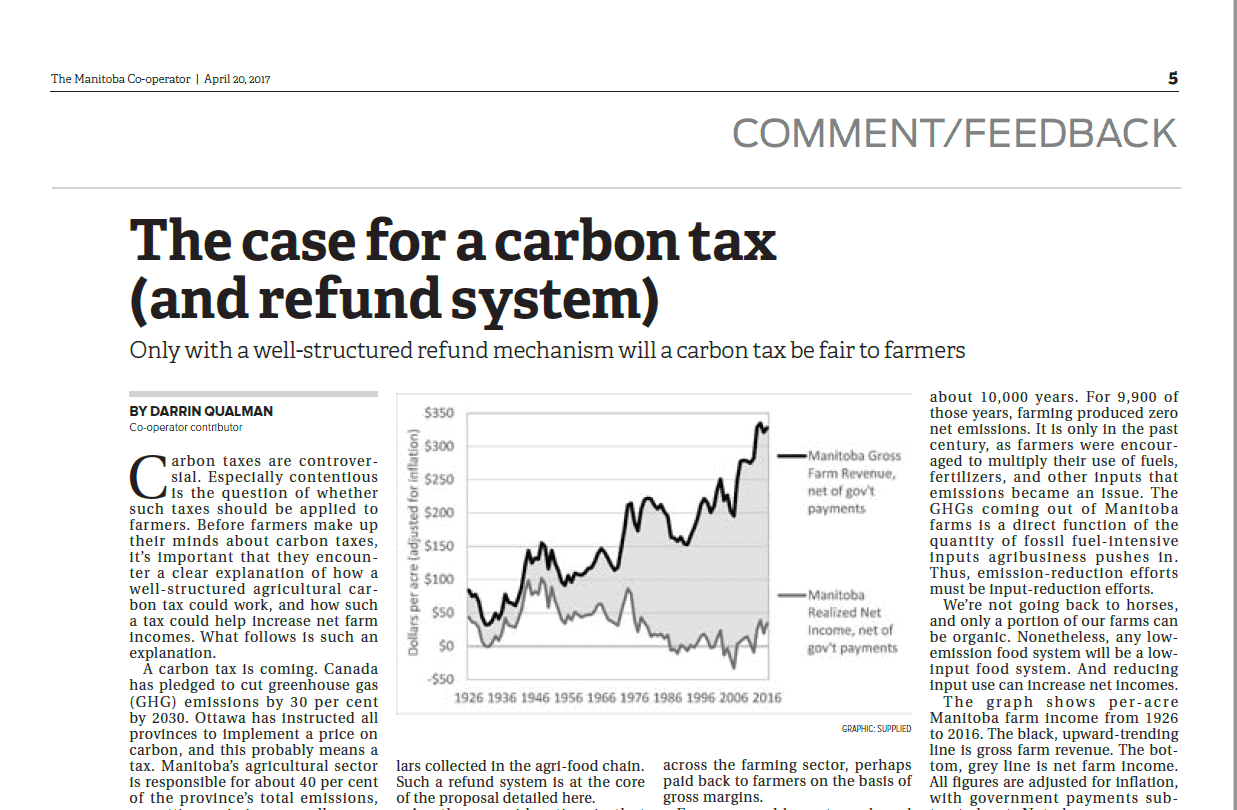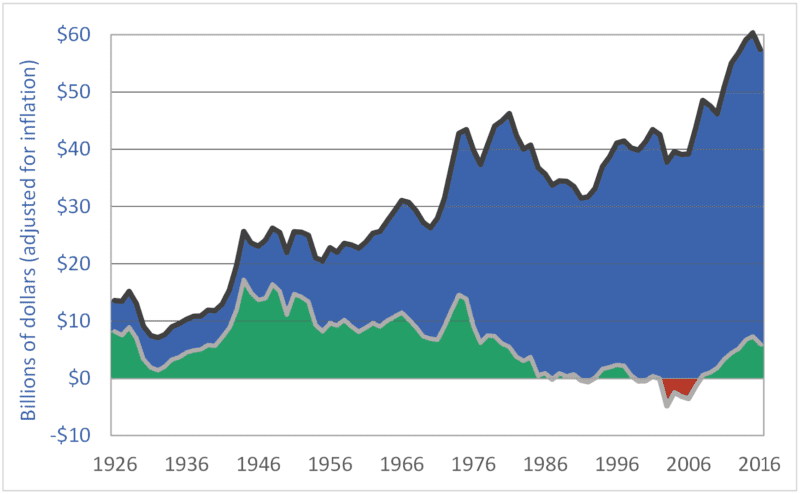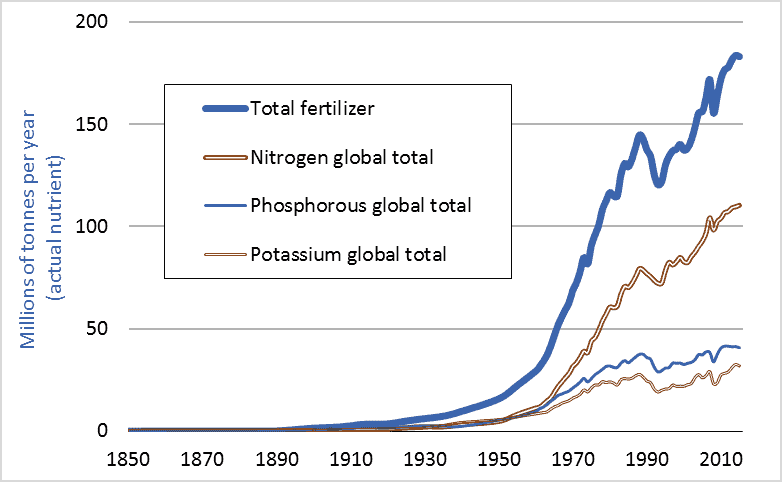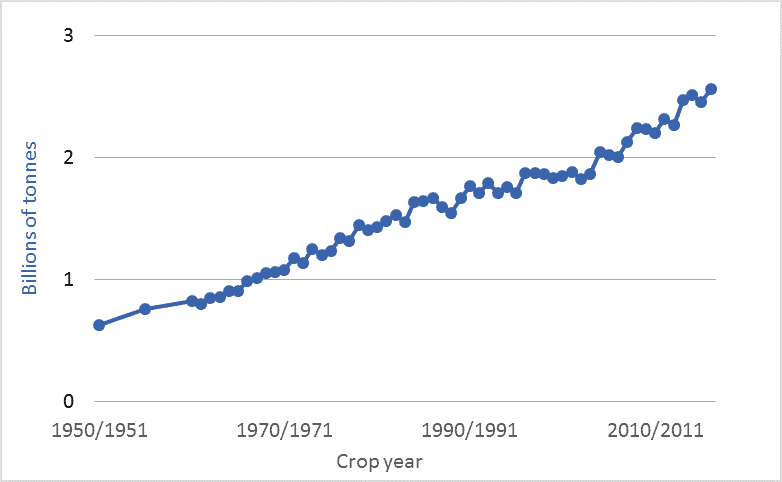As populations continue rising, per-capita farmland area is falling. In 1950, for each person in the world (about 2.5 billion back then) there was, on average, 0.46 hectares of cropland (“arable” land). That is an area roughly equal to the in-bounds playing area of a US football field. Today, per-capita cropland area is just 0.19 hectares. By 2050, it will be lower still: 0.15 hectares—one-third the area in 1950. We’ll soon be down to just a third of a football field each.
The graph above shows the average per-capita cropland area from 1950 to 2050. The units are fractions of a hectare.
Humanity’s in a bind. We’re becoming more numerous. The UN predicts a global population of 9.8 billion by mid-century. Moreover, we’re becoming richer. Projected rates of economic growth—3 percent compounded annually, according to the World Bank—will cause the size of the global economy to nearly triple by 2050. That enlarged, enriched population will want to consume more food. It will want to consume more of its food in the form of meat rather than vegetables or grains. It will be more prone to overeating and more demanding of processed foods and junk food. And it will waste more of its food, because comfortable, well-fed people do that. In addition, more food will be diverted to energy and fuel uses, including biofuels for air travel and ocean shipping. Based on these factors, the UN projects that food production in 2050 will have to be 70 percent higher than in 2005 (see here or here).
Here’s the bind. In order to deal with climate change, the world’s governments have committed to reducing GHG emissions by 30 percent by 2030—just over 12 years from now. And reductions of 50 to 80 percent are needed by 2050. How do we expand food supplies and reduce emissions? Bringing new land into production (Amazon rainforest, for example) emits huge plumes of GHGs as soil carbon is released by tillage. If we want to reduce emissions we cannot afford to continue releasing carbon stored in forests or grasslands. So the alternative is to intensify production—produce more on the land we already have. This usually requires more fertilizer. But the most used and most critical fertilizer, nitrogen, is made from natural gas and is a major source of GHG emissions. Globally, nitrogen (N) fertilizer use has doubled since the 1970s (see blog post here); Canadian farmers have doubled their N use since the 1990s. Our commitments to downward-trending GHG emissions is already in conflict with upward trending nitrogen fertilizer usage.
In the face of monumental problems such as these it is best to just spend some time mulling our predicament. We must resist the “rush to solutions.” For now, let’s just consider some questions:
– Can we continue to waste 20 to 40 percent of our food?
– Can we burn food in cars and airliners and cruise ships?
– Should we increase livestock production by two-thirds in the next three decades (as the UN predicts), knowing that many livestock production systems inefficiently turn 5 to 10 Calories worth of grain into one Calorie of meat?
– Should we continue to make bad food out of good—producing millions of tonnes of nutritionally disfigured foods such as soft drinks, cocoa puffs, and potato chips? (One quarter of US Calories now come from junk food. See here.)
– Should we continue to foster a food industry that promotes over-eating and resulting health problems?
As our per-capita land base contracts, and as our atmospheric emission-space fills, can we afford these extravagances? …these follies? An adequate response to these problem will require re-imagining and restructuring of our food system–fundamental changes to food production and consumption.
Graph sources: FAOSTAT and the UN Population Division

